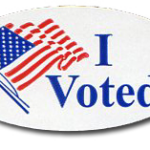Introduction
The effort to extend voting rights to 16- and 17-year-olds is in its infancy, and stands to gain from the experiences of other voting rights and election reform movements. This memo summarizes research on four relevant movements and articulates how their lessons apply to the Vote16 effort. These lessons will help inform the Vote16USA campaign’s goals and strategy moving forward.
The movements studied are:
- Lowering the voting age from 21 to 18
- Women’s suffrage
- Ranked choice voting
- Felony Re-Enfranchisement
The following post provide summaries of each movement’s timeline, key takeaways for Vote16, and brief facts on each movement’s progression, leadership, and political dynamics.
(Click here for a PDF of this report)
Lowering the Voting Age from 21 to 18
Timeline highlights:
- Congress began debating lowering the voting age from 21 to 18 after the U.S. entered World War II.
- Georgia amended its state constitution to change the statewide voting age to 18 in 1943, the first state to do so.
- In 1970, Congress tried to lower the voting age through a VRA reauthorization bill, Congress’ authority to make this move was challenged in court. The Supreme Court ruled that Congress did have the power to set voter qualifications for federal elections, but not for state elections.
- To eliminate the possibility of different voting ages for state and federal elections, the 26th Amendment was proposed and ratified in 1971.
Important Takeaways:
- States can set lower voting ages for federal elections because of how the Electoral College functions.
- Elected officials can successfully champion the cause, or at least be the initial catalysts for action (doesn’t necessarily have to start with grassroots).
- The argument for 18-year-old voting was often tied to the “Old enough to fight, old enough to vote” sentiment, but also succeeded on its merits.
- “The reason I think 18-year-olds should vote is that I think they would add to the interest in American elections, they would add to the quality of the debate – the younger generation today is better educated, knows more about politics, more about the world, than many of the older people. That’s why I want them to vote–not because they’re old enough to fight, but because they are smart enough to vote.” – Richard Nixon, Sept. 1968
Women’s Suffrage
Timeline highlights:
- Movement began in the 1800’s, on the local level. States began granting women the right to vote in school elections, since education was a “maternal” issue.
- By 1890, over 20 states had granted women the right to vote in school board and/or other local elections.
- As a territory, Wyoming granted women full voting rights in 1869; this carried over when it became a state in 1890.
- The state had a major gender imbalance in its population, with men vastly outnumbering women, and some thought that granting women voting rights would attract more women to the state.
- The 19th amendment passed in 1920, giving women the right to vote in all U.S. elections.
Important Takeaways:
- Initial success on the local level catalyzed successful expansion of voting rights on larger levels.
- Self-serving interests can inspire politicians to support expanded voting rights.
Ranked Choice Voting (RCV)
RCV is a voting method in which voters as many candidates as they want in order of preference, rather than choosing only one. It can be used as “Instant Runoff Voting” to determine the winner of a race for a single office, like mayor, or can be used to elect multiple candidates to bodies like a city council.
Timeline highlights:
1900-1960
- Ranked Choice Voting (RCV) was adopted in many jurisdictions around the early 1900’s, in many cases in an effort to counter the power of political machines.
- After World War II, opponents of RCV used electoral victories by black candidates and Communist Party members in RCV cities to rally support for repeal efforts, claiming RCV was responsible for their wins.
- By 1960, all cities using RCV except for Cambridge, MA, had repealed it.
1960-Present
- 10 cities have adopted RCV for local elections since 2000.
- In 2016, the state of Maine became the first state to adopt RCV for all state elections, through a ballot initiative. Implementation has been held up by the state’s Supreme Court.
- Other states use RCV for party nominating contests or military and overseas voting.
Important Takeaways:
- Success on the local level has paved the way for state level action.
- Creative public education campaigns that demonstrate RCV in a non-political setting (e.g. vote for the best food) and highlight non-political uses of RCV (e.g. for Oscar voting) have proved effective.
- Having a central, national clearinghouse-type organization dedicated to the issue has been instrumental (FairVote).

Felony Re-Enfranchisement
Timeline highlights:
- 48 states (all except Vermont and Maine) have laws that prohibit citizens convicted of felony offenses from voting for some period of time. Specific policies vary by state. Reform efforts in recent years have changed policies in several states.
- Since 1997, 23 states have amended felony disenfranchisement policies to make them less restrictive
- Reform efforts include legislative campaigns and citizen initiated ballot initiatives.
Important Takeaways:
- Translating public opinion to policy can be difficult. The majority of Americans support voting rights for persons who have completed their sentence, or those on probation or parole, but many legislatures have remained resistant to these reforms.
- Small victories can lead to larger ones. Some states have amended felony disenfranchisement laws multiple times in recent decades, making it successively easier for people to vote.

Key Lessons for Vote16USA:
A few important, applicable lessons emerge from this research:
Success on the local level can lead to success on the state level, and success on the state level can lead to success on the national level.
This lesson, most clearly conveyed by the Women’s Suffrage movement and the movement for 18-year-old voting, validates Vote16’s current approach of pursuing change on the local level first. However, it is also important for Vote16 to have a plan in place for scaling the work to state-level advocacy after initial local success, especially given the constraints on local change in many states.
Political dynamics and considerations depend on individual circumstances, but it can be beneficial to invoke politicians’ self-serving interests.
Almost every movement studied gained support from elected officials by playing to their interests, and Vote16 should not be afraid to do the same. While we should recognize when appealing to self-interest can help achieve specific objectives, our overarching advocacy strategy will continue to target all politicians and stakeholders.
The road to success is long, but opportunities present themselves.
A primary takeaway from this research is that movements to extend voting rights or reform election procedures are decades-long endeavors, and we must approach Vote16 with the same expectation. Additionally, we must be prepared to capitalize on opportunities for particular leverage when they arise, as supporters of 18-year-old suffrage, who began working in earnest in the 1940’s, seized upon the opportunities presented by the atmosphere during the Vietnam War.
National clearinghouses propel the work.
Many of the movements studied owe much of their success to organizations that served as national clearinghouses to coordinate and support work around the country. This is the role Vote16USA strives to play, and the central campaign must remain robust for the movement to succeed.
Bibliography
Cultice, W. (1992). Youth’s battle for the ballot: A history of voting age in America. Praeger.
Douglas, J. (2017). The Right to Vote Under Local Law. George Washington Law Review, 85.4. Retrieved from http://www.gwlr.org/wp-content/uploads/2017/09/85-Geo.-Wash.-L.-Rev.-1039.pdf.
Hamilton, V. (2012). Democratic Inclusion, Cognitive Development, and the Age of Electoral Majority. Brooklyn Law Review, 77. Retrieved from http://brooklynworks.brooklaw.edu/cgi/viewcontent.cgi?article=1141&context=blr.
Novoselic, K. (2015, August 26). A brief history of Ranked Choice Voting [Blog post]. Retrieved from http://www.fairvote.org/a-brief-history-of-ranked-choice-voting.
The Sentencing Project. (2016). Felony disenfranchisement: A primer. Retrieved from http://www.sentencingproject.org/publications/felony-disenfranchisement-a-primer/.





